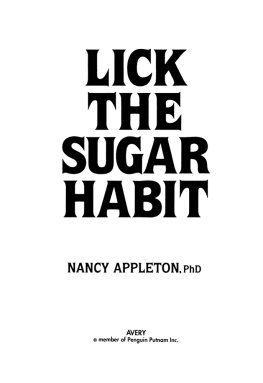
This edition is published by PICKLE PARTNERS PUBLISHINGwww.pp-publishing.com
To join our mailing list for new titles or for issues with our bookspicklepublishing@gmail.com
Or on Facebook
Text originally published in 1951 under the same title.
Pickle Partners Publishing 2016, all rights reserved. No part of this publication may be reproduced, stored in a retrieval system or transmitted by any means, electrical, mechanical or otherwise without the written permission of the copyright holder.
Publishers Note
Although in most cases we have retained the Authors original spelling and grammar to authentically reproduce the work of the Author and the original intent of such material, some additional notes and clarifications have been added for the modern readers benefit.
We have also made every effort to include all maps and illustrations of the original edition the limitations of formatting do not allow of including larger maps, we will upload as many of these maps as possible.
BODY, MIND, & SUGAR
BY
E. M. ABRAHAMSON, M.D.,
AND
A. W. PEZET
The astounding relationships between fatigue, hay fever, ulcers, neurosis, alcoholism, migraine, insomnia, allergies, rheumatoid arthritis, epilepsy, depression, and the food you eat every day.
TABLE OF CONTENTS
Contents
DEDICATION
To
Doctor Seale Harris
FIGURES
1 Pancreas and Surrounding Structures
2 Structure of the Pancreas (Schematic)
3 The Glucose Tolerance Test
4 Effect of Diet on the Glucose Tolerance Test
5 Effect of Pregnancy on the Glucose Tolerance Curve
6 The Six-hour Glucose Tolerance Test
7 Asthma and Diabetes (1)
8 Asthma and Diabetes (2)
9 Intravenous Glucose Tolerance Test in Fatigue
10 Alcoholism
11 The Principal Influences on the Blood Sugar Level
12 Rheumatoid Arthritis
INTRODUCTION
MEDICAL SCIENCE has made great progress in the twentieth century. Despite its advances, however, the mysteries still outnumber the certitudes. The number of medical papers that begin, We do not know what, We do not know why, and We do not know how, is still formidable. Medical men do not like to admit this to laymen. They have invented words and phrasesneurosis, neurasthenia, and psychoneurosis with depressionto hide their ignorance from the layman and from themselves.
Are the hundreds of thousands, perhaps millions, of people thus labeled suffering from mental or from physical disease? The vast majority of them wander from general practitioner to specialist to psychiatrist without ever finding a cure for the ailments that make their lives a misery to themselves and an irritation to those close to them.
Almost daily one reads of a hitherto considered sane person who has run amuck and killed someone. Even more common are reports of persons who have committed suicide for no reason other than depression. There are approximately eight thousand murders and twice that number of suicides in the United States every year. Not all of the murders are gang murders, premeditated killings, or accidents. Recently, for example, it was pointed out that of a hundred indicted murderers defended by Judge Samuel Liebowitz in his days as a defense attorney not one had a criminal record. They were people who had killed in a moment of insanity. And the list of persons who have recently killed themselves while suffering from a psychoneurosis with depression reads like a page torn from Whos Who.
Since physicians are required to report only communicable diseases, statistics on those suffering from such afflictions as hay fever, asthma, rheumatic fever, and peptic ulcer are not available. The number suffering from the various allergies grouped under hay fever must be enormous. It is large enough for a daily pollen count to be taken throughout North America during the hay fever season, and for newspapers to publish the results. Everyone knows that hay fever and asthma are in some way related, that hay fever sufferers often become asthmatics as they grow older, and that asthmatics get worse and die. In the normal sense, however, asthma is not a fatal disease, but rather one that lingers until death. For rheumatic fever the direct death rate is low, 0.8 per 100,000 for the year 1946 (the latest for which complete statistics are available), but the rate from heart ailments that result from chronic rheumatic fever is twenty times higher. Stomach ulcers, as they are popularly called, cause as many deaths a year as murder. Cancer of the digestive organs is one of the half-dozen greatest causes of death; the number of malignant tumors located in the insulin-secreting islets of the pancreas is only a small fraction of this total.
In the United States there are approximately four million men and women who could be classed as alcoholics. They cannot drink as normal people do. Their drinking is compulsive. In advanced cases, once they start drinking they cannot stop until the alcohol supply is expended or until they finally pass out. What is it that sets these persons apart from their normal fellows?
Doctors and employers alike are becoming aware of the increasingly large number of people who suffer from chronic fatigue. These people are too tired or too apathetic to do their work, whether occupational or household duties, with satisfactory efficiency.
Pick up a newspaper and you will read of the brilliant pitcher who had a near no-hitter going until the seventh or eighth inning and then blew up. You will read also of the railroad engineer with the impeccable record of many years who drove past the red signal and wrecked his train.
Why are the greatest number of industrial accidents bunched between mid and late afternoon?
Is there any mental or physical basis for the moral breakdown that underlies all delinquency and crime?
Now these diseases and conditions and happenings and questions appear utterly unrelated. It is the purpose of this book to show you their very close relationship indeed, the result of recent discoveries of their common conditioning.
These discoveries have been made in the laboratory and by means of the scientific method. They have been verified by other workers and recognized in at least one instance by honoring the discoverer with one of the highest awards in the medical field. But the almost obvious implications of these discoveries are still a matter of controversy and not as yet accepted by the medical profession as a whole, largely because most doctors have not as yet had time to read the literature.
Indeed, not all of those whose brilliant thinking and patient labors have contributed to these determinations are aware of the work of others in the same field. In several cases it was the lay member of this collaboration who revealed the existence of parallel work to isolated researchers.
This is not surprising. Scientists often attack similar research projects from vastly different directions. Their work frequently is published in journals devoted to a different specialty. And today the literature in any scientific field is so vast that no man busy working in it, especially the physician with his private and clinical practice, can possibly assimilate it all.
It is also a normal part of what sociologists call the cultural lag that new knowledge is slow to influence the behavior of even the minority who can think. Today, however, we are living at a rate of change so rapid that our very survival may depend upon the speed with which we are able to take advantage of new knowledge. No apology is needed, then, for a book that attempts to disseminate such knowledge.
Next page








